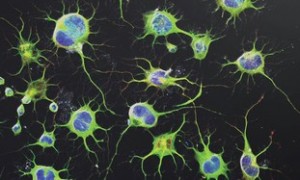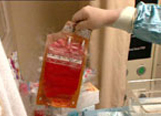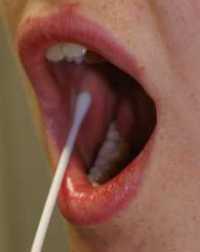
OUR AMAZING 21ST CENTURY
Medical science has made great strides with illnesses that, not too long ago, afforded very little hope for the patient. In some cases, even the ‘man on the street’ has become part of the remedy. Bone marrow transplants are a case in point. Bone marrow transplants have become the cure for a wide variety of life-threatening diseases ranging from many types of cancer to immunodeficiency syndromes and anemias.
WHAT IS BONE MARROW?
Bone marrow is the soft tissue inside a bone which produces the body’s blood cells (red cells, white cells and platelets).
WHAT ARE STEM CELLS?
Stem cells are immature blood cells produced in the bone marrow. They can develop into red blood cells, white blood cells, and platelets.
HOW DOES A TRANSPLANT EFFECT A CURE?

A transplant donated by a healthy person can help patients with serious diseases live longer and healthier lives. If the bone marrow is damaged, the new cells produced will also be damaged. A replacement of undamaged cells will enable the body to produce healthy blood cells, thus creating the cure.
WHAT DISEASES HAVE BEEN FOUND TO BENEFIT FROM A BONE MARROW TRANSPLANT?
AML, ALL, CLL, CML, Juvenile myelomonocytic leukemia, Hodgkin lymphoma, non-Hodgkin lymphoma, severe aplastic anemia, Fanconi anemia, Paroxysmal nocturnal hemoglobinuria, Pure red cell aplasia, Amegakaryocytosis/congenital thrombocytopenia, SCID, Beta thalassemia major, Sickle Cell Disease, Krabbe disease, Hurler syndrome, MLD, ALD
EXACTLY WHAT IS TRANSPLANTED?
Three sources of cells used for transplants are:
- Bone marrow (BM)
- Stem cells from peripheral blood (PBSC)
- Blood collected from the newborn’s umbilical cord after its birth (CB)
The doctor doing the transplant chooses the source most appropriate for the patient, taking into consideration the needs and preferences of the donor.
WHAT IS THE DIFFERENCE BETWEEN AUTOLOGOUS AND ALLOGENEIC STEM CELL TRANSPLANTS?
An autologous transplant involves only the patient’s own stem cells which are then transplanted back into the patient several days later after high doses of chemo and sometimes radiation. An allogeneic stem cell transplant is done using cells from another donor.

WHY CAN’T ANY KINDLY PERSON DONATE HIS MARROW?
Human leukocyte antigens (HLA) are proteins that are present in most body cells. These antigens help identify tissue types. The immune system utilizes HLA antigens in order to identify the cells that belong in the body and the cells that do not belong in the body. If the system recognizes cells very different from itself, it will reject them.
In one’s tissue-typing system, there are two groups of antigens. One group is inherited from the mother and the other group from the father.
HLA proteins are important in determining the compatibility of donors and patients for a stem cell transplant. In order to match tissue types for a transplant, the compatibility of ten of the donor and patient antigens are checked (generally, A, DR, C, B, and DQ).
When the transplant center, to which the blood samples were sent, examine the level of compatibility, they check the genetic similarity of the patient’s and the donor’s tissue types. Usually, a compatibility of at least 8 out of 10 antigens is necessary in order to approve a donor for a transplant.
WHY IS GENETICS A SUCH A MAJOR FACTOR?
Strict matching is necessary since the key to a successful replacement is genetics. If the donor matches the recipient, the transplant is not likely to be rejected and the chances of success are excellent. A sibling is a good choice.

WHAT IF THERE IS NO SIBLING AVAILABLE OR THE SIBLINGS’ DNA DO NOT MATCH?
A request is then sent by the oncology clinic to a universal registry which will search its database for a compatible potential donor. A match may be found among the patient’s neighbors or it may be a resident of a country across the ocean. The potential donor is usually thrilled to become a crucial part of a life-saving medical miracle.
ARE ALL REGISTRIES THE SAME?
If the patient is a member of a minority ethnic group and a Registry which focuses on that ethnic group exists, a request is sent to that Registry thus greatly increasing the chances of finding a match.
HOW DOES THE REGISTRY DETERMINE DNA?

The new registrant swabs the inside of his cheek with a Q-tip. The saliva is then analyzed for its genetic components. DNA testing is costly ($50 per test) which is why a registry must put a cap on the amount of registrants it can accept. When donations are made by the public, the increased funding enables the registry to grow, thus boosting the chances of a positive response to each search request.
WHAT IS THE DIFFERENCE BETWEEN A BONE MARROW TRANSPLANT AND A STEM CELL TRANSPLANT?
Both are the same as far as results are concerned. However, the method of harvesting the stem cells differs. Not that long ago, stem cells were obtained from bone marrow taken from the donor. This procedure was painful for the donor and often discouraged the donation. One cannot imagine the devastation by the patient and his family when a perfectly matching donor refuses to go ahead.
WHAT IS THE PROCESS OF STEM CELL DONATION? IS THERE PAIN INVOLVED IN STEM CELL DONATION?

In recent years, the cells are harvested from the donor’s blood. Medication is given to the donor beforehand to increase the stem cells in his circulatory system. Blood is then taken much the same as when donating a pint of blood. The stem cells are extracted from the blood which is then given back to the donor. The process continues for hours but the donor is kept comfortable during the whole procedure.
In some cases, minor discomfort such as muscle aches are felt but these soon disappear. The tremendous emotional satisfaction as he watches that little ‘bag of life’ taken to his soon-to-be blood brother will eradicate any lingering pains.
Your gift will help save a life!
Sign up for our newsletter to hear more about our life-saving work.

